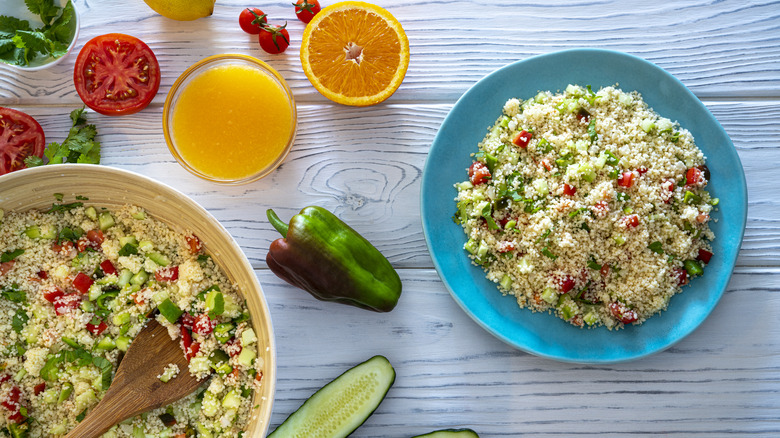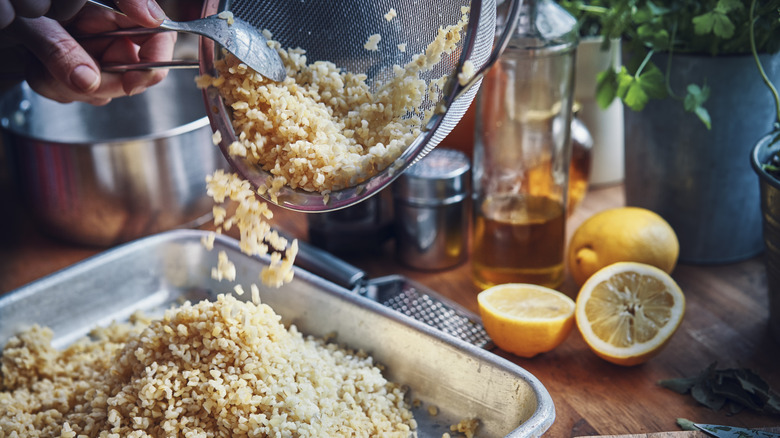The Crucial Step You Should Never Skip When Making Bulgur Salad
If you are looking for an easy-to-prepare whole grain to shake up your grain bowls, or to serve as a filling side dish, look no further than bulgur. Made from par-cooked whole wheat grains that are dried and then cracked, bulgur is an ancient food with a nutty flavor and chewy texture. Bulgur is often used in salads, to provide structure and a satisfying bite. Because of the par-cooking process, bulgur doesn't take as long as other whole grains to cook, and finely ground bulgur can even be prepared simply by soaking in liquid. That means you can use flavorful liquids for bulgur salads that might not heat well, like juices.
The key consideration for soaking or cooking bulgur for a salad is the size of the grain. Consider your recipe when buying bulgur if you have a choice; fine bulgur makes a light and fluffy pilaf texture, and medium to coarse ground bulgurs are more substantial, with a springy bite.
Soaked or simmered, bulgur is a tasty salad grain
Even larger ground bulgur can be prepared by soaking, but the soaking liquid should be hot, which will take up to an hour. To speed up the process, boil coarse bulgur for 10 or 15 minutes rather than simply soaking it. Check the cooking bulgur by tasting a few grains to see if the texture fits your liking. Then drain the excess water from the pot, fluff up the cooked grain and allow it to rest, covered to fully hydrate.
On the other hand, fine bulgur will soften with room temperature liquid, and hot water can actually make it too mushy. Simply place the grains in a bowl and cover with your chosen liquid. Drain after about 10 minutes, and it's ready to go.
As we've suggested, there's no need to stick to plain water when preparing bulgur. Flavorful chicken or vegetable broth would be perfect for a savory salad packed with nuts and dried fruits, and when you make tabouli, try saving the water from your tomatoes and cucumbers and add it to some lemon juice to soak the grain.

